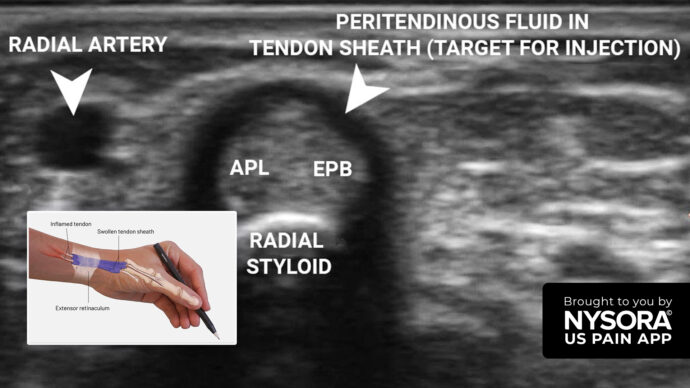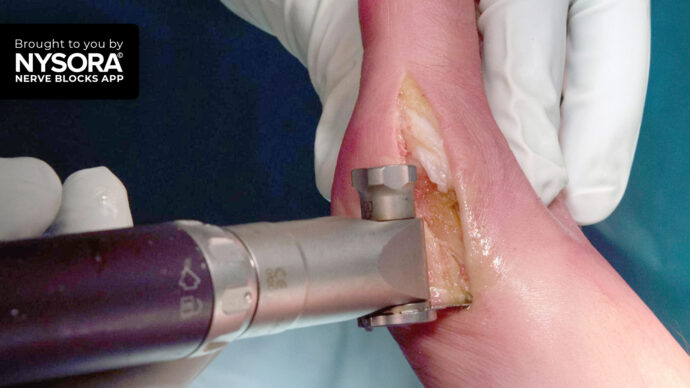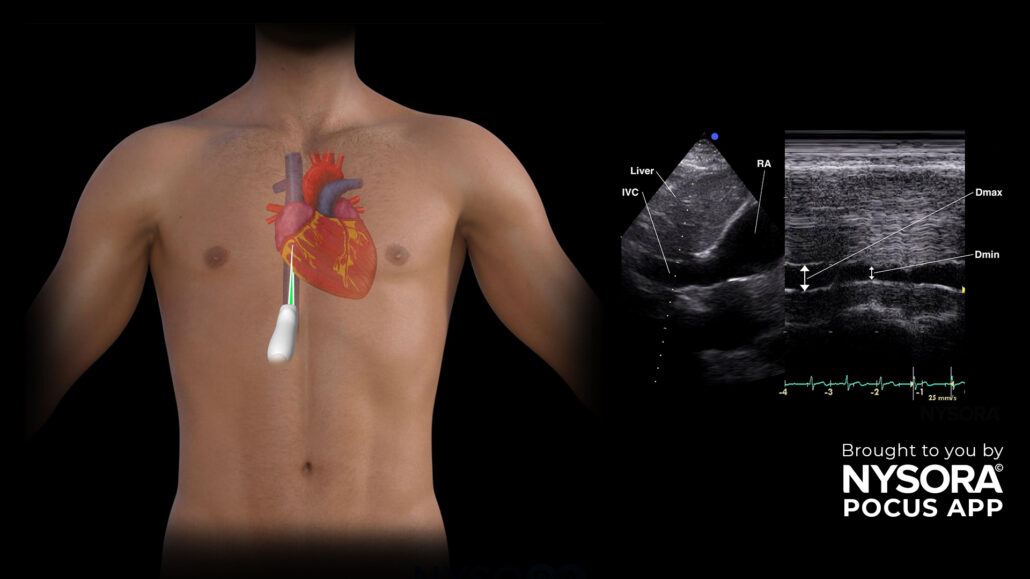
Assessing Fluid Status in the ICU: The Role of POCUS
A 72-year-old patient was admitted to the Intensive Care Unit (ICU) for monitoring after traumatic brain injury. The patient is fully sedated, ventilated and requires norepinephrine for maintaining adequate cerebral perfusion pressures. He has no severe comorbidities and focused cardiac ultrasound showed normal biventricular function and valves. The patient is rather hypotensive and you are in doubt whether you should administer IV fluids.
Here’s how POCUS can be used to assess the fluid status:
- Obtain a clear view of the inferior vena cava (IVC) using the IVC view.
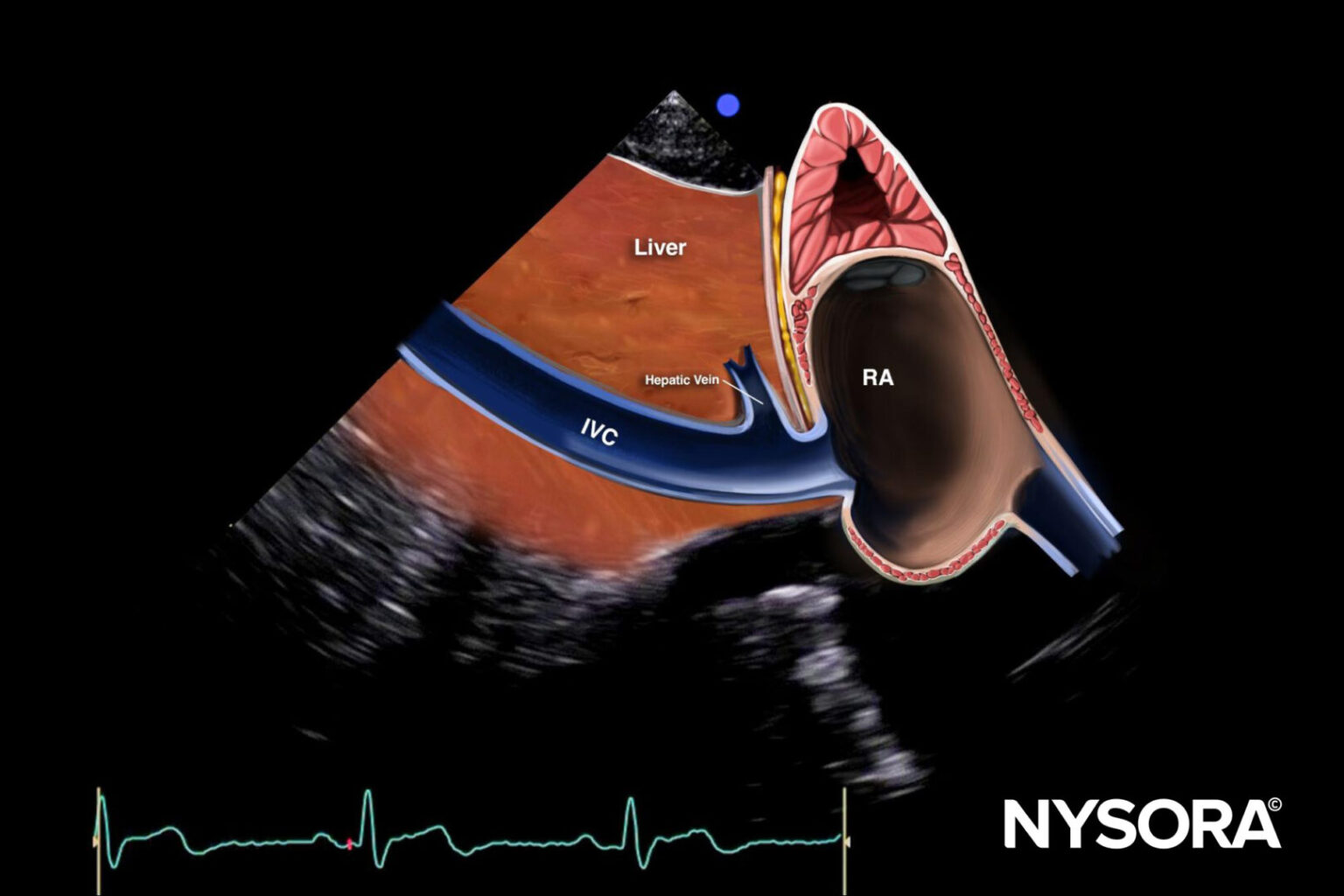
Inferior vena cava (IVC) view.
- Use the M-mode 2 cm distal to its junction with the right atrium or 1 cm distal to the hepatic vein.
- First, assess the diameter of the IVC. The size is between 1.5 and 2.5 cm.
- Secondly, assess the minimal diameter and the maximum diameter with M-mode. Calculate the distensibility index: (max. diameter (Dmax) – min. diameter (Dmin))/min. diameter (Dmin)
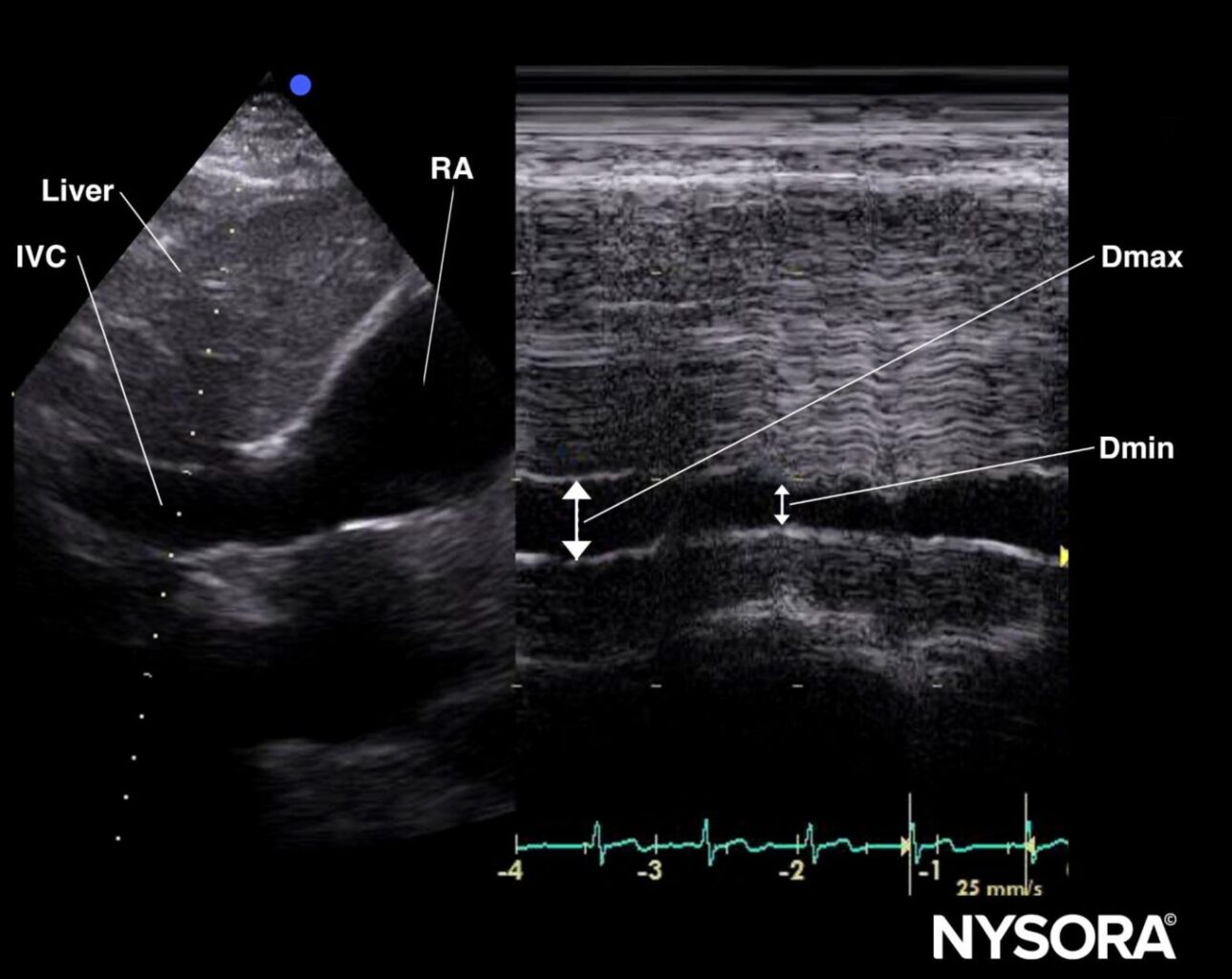
- If it is >18%, this patient could benefit from fluid administration.
Transform your practice with the power of POCUS using NYSORA’s POCUS App. Enhance your skills, broaden your diagnostic capabilities, and provide outstanding patient care. Experience the difference today – Download the app HERE.

